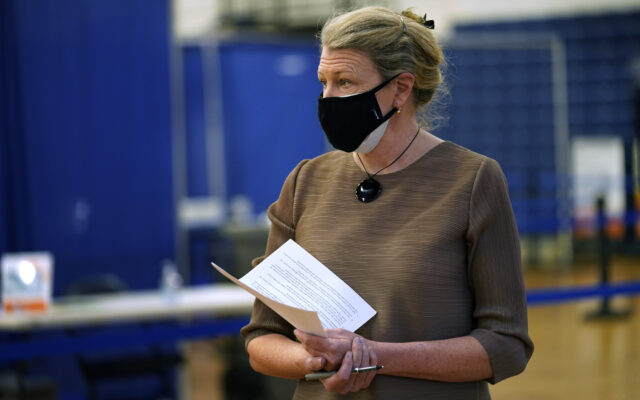
Traveling for April vacation? Test for COVID-19 when you get back.
By Jeanne Lambrew
As April vacation week begins for Maine students and families, the race between COVID-19 vaccinations and virus variants is in high gear. We rank second in the nation on the percent of state residents getting a first dose of the vaccine. But, COVID-19 cases have been rising rapidly at the same time. The number of residents in hospitals has climbed to over 100. And while our success in vaccinating older Mainers has helped keep our death rate low, younger people are not only getting the disease more often, they are getting sicker than in the previous surges.
COVID-19 is a well-known world traveler. Variants of concern previously identified from the United Kingdom, Brazil and South Africa have been detected in Maine. People traveling have been known to cause outbreaks, often unknowingly, once they return home if they’re not yet experiencing symptoms.
This is why testing for COVID-19 remains critical. Getting a test is simple, free and protects you, your family and your community. It identifies people infected by the virus early, often before symptoms appear. And getting a test when you have a fever, headache, chills, fatigue or difficulty breathing allows you to determine if you have allergies, a common cold or if this is the highly contagious and serious virus. If you test positive, you can isolate to limit the number of additional people infected. You can save lives.
For these reasons, Maine currently requires people traveling to states outside of New England to “test or quarantine.” This means that you must quarantine for 10 days upon return to Maine unless you obtain and receive a negative COVID-19 test from a sample taken no longer than 72 hours prior to arrival. Maine strongly urges testing prior to arrival; however, for people who test upon arrival in Maine, it is important that you quarantine while you await your test results.
This is especially important for families traveling during the April vacation. COVID-19 transmission in Maine schools is lower than in the rest of the population, thanks to the health and safety protocols Maine schools have consistently followed since last summer. That said, children are still catching and spreading the virus. And a COVID-19 vaccine has not yet been authorized for children under age 16.
The best type of COVID test is a molecular or “PCR” test. The results may take a little longer, but PCR tests have proven to be highly accurate. Rapid “antigen” tests work well for people with symptoms. Such tests may also be used several days in a row — called “serial” testing — as a screening tool. A number of Maine school districts will be offering rapid tests at the end of next week before school resumes on April 26 and again early that week as a way to screen for COVID-19 as people return from the break.
COVID-19 testing in Maine is free of charge. It is available at locations throughout the state, from health care clinics to pharmacies. Learn where you can get a test by visiting the state’s Keep Maine Healthy website or calling 211.
Being fully vaccinated — meaning two weeks after your final dose — exempts you from the need to get a COVID-19 test or quarantine if you travel. You also don’t need to test if you have had COVID-19 in the last 90 days and recovered. We urge everyone age 16 and older to get vaccinated now. Appointments can be found by visiting VaccinateME.Maine.gov, or calling Maine’s Community Vaccination Line at 888-445-4111.
In addition to testing and vaccination, please continue to take the simple steps that have protected the health and safety of Maine people throughout the pandemic: Wearing a mask, physical distancing, washing hands and staying home if you don’t feel well. These measures remain vital whether you’re at home, out in your community or traveling for a well-deserved vacation during the break from school next week.
Lambrew is commissioner of the Maine Department of Health and Human Services.